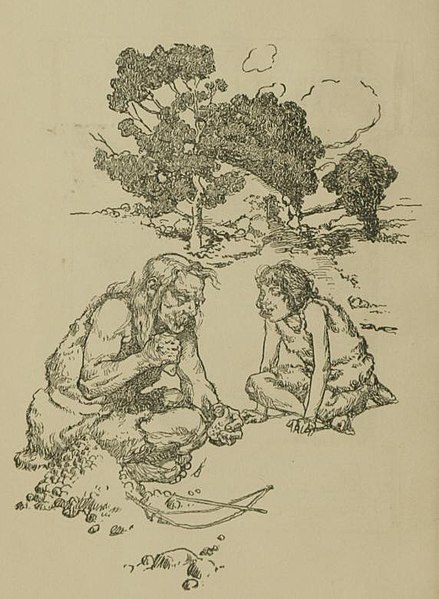In the history of art, prehistoric art is all art produced in preliterate, prehistorical cultures beginning somewhere in very late geological history, and generally continuing until that culture either develops writing or other methods of record-keeping, or makes significant contact with another culture that has, and that makes some record of major historical events. At this point ancient art begins, for the older literate cultures. The end-date for what is covered by the term thus varies greatly between different parts of the world.
The Venus of Hohle Fels, dated circa 41,000 BP. Germany
Prehistoric painting of rhinoceroses in the Chauvet Cave, France, dated circa 35,000 BP
Pseudodon shell DUB1006-fL with the earliest known geometric engravings, supposedly, made by Homo erectus; ca. 500,000 BP; from Trinil (Java); Naturalis Biodiversity Center (Netherlands).
Claimed "Oldest known drawing by human hands", discovered in Blombos Cave in South Africa. Estimated to be 73,000 years old.
Prehistory, also called pre-literary history, is the period of human history between the first known use of stone tools by hominins c. 3.3 million years ago and the beginning of recorded history with the invention of writing systems. The use of symbols, marks, and images appears very early among humans, but the earliest known writing systems appeared c. 5,200 years ago. It took thousands of years for writing systems to be widely adopted, with writing spreading to almost all cultures by the 19th century. The end of prehistory therefore came at different times in different places, and the term is less often used in discussing societies where prehistory ended relatively recently.
Engraved images of animals on antler
Massive stone pillars at Göbekli Tepe, in southeast Turkey, erected for ritual use by early Neolithic people 11,000 years ago
An early sketch imagining an adult and a juvenile from prehistoric times making a stone tool
A nineteenth century concept of early humans in a wilderness








